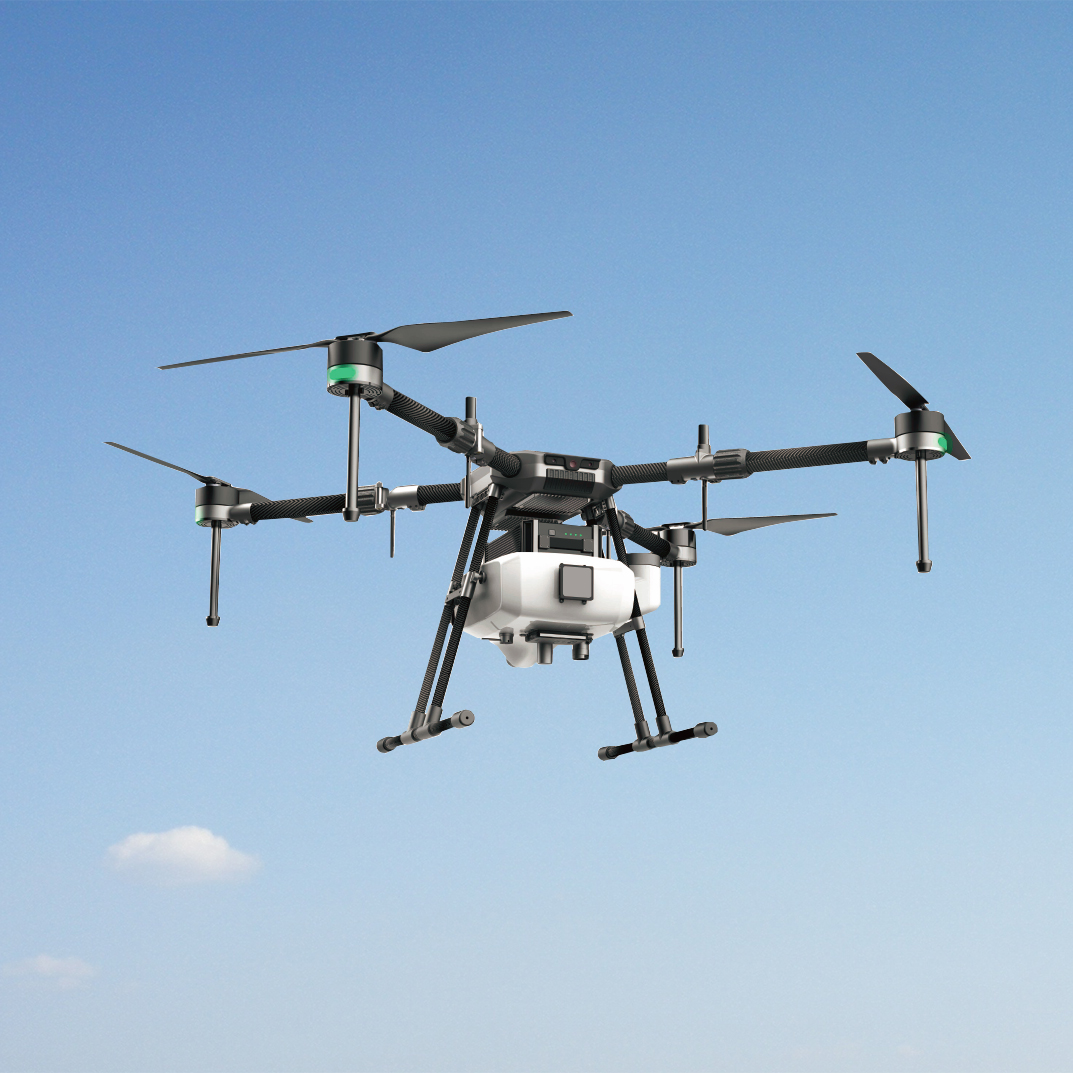One of the major problems with drones is their range. The batteries still provide insufficient flight time to cover larger farms. But just as in the automotive industry, the technology in this area is improving rapidly.
Take, for example, the Skyfront Tailwind, a hybrid multirotor drone that is powered by both petrol and electricity and has a payload of 4 kilograms. This drone recently established an endurance world record with a flight of 4 hours and 34 minutes. This is about 10 times longer than the range of the average battery powered drone. These kinds of improvements make investing in a drone more and more interesting.
Text continues underneath image

The expansion of applications is also increasing rapidly. At the moment there are numerous companies working on the development of drones that deal with weed control. In China, manufacturer DJI launched the eight-rotor Agras MG-1 that can easily handle it. It sprays the correct amount of liquid and modulates its spraying for even coverage.
Text continues underneath video
Also read: Drone spraying and spreading becoming reality
In Japan, Nileworks will build multi-copter drones that should be able to see the shape of a field and spray just 30 cm above, reducing drift. The drone wil also be able to see how much pesticide is needed, based on the appearance of the crop.
Each of these drones can carry up to 1 litre of pesticide and will cover 1 hectare in 20 minutes. Nileworks aims to present the drone in 2019, first in Japan and later in various other countries. The estimated costs of this drone are expected to be $ 35,300. Farmers can control it with an iPad.
Text continues underneath video
Not everyone is optimistic about these latest developments. Recent research by drones researcher Peter Newman of Planfarm in Australia shows that weed control with drones has a long way to go. According to Newman, ground-based technology is still the best choice at the moment. This has primarily to do with the high costs of obtaining the required image quality, says Newman.
There are also other disadvantages associated with the use of drones. For example, birds of prey like eagles love to attack drones. And that often results in costly encounters. Newman does see a role for drones. They can identify weeds, while tractors on the ground do the spraying.
Text continues underneath video
Nonetheless, there are hundreds of new uses for agricultural applications being tested in agriculture at the moment. An example is a trial of Ninox Robotics in the Australian states of Queensland and New South Wales to combat Australia’s pest problem. With military grade Israeli drones the company detects the presence of invasive pests – such as wild dogs, rabbits and pigs – across rural areas.
Text continues underneath image
And what about tiny drones? In the US, Walmart filed a patent for autonomous robot bees called pollination drones, which can help to pollinate crops. And researchers in Japan also started exploring the possibility of tiny robots capable of pollinating plants in the absence of real bees.
The possibilities seem limitless. But the large-scale commercial application of drones in agriculture is not only expensive. There are also practical obstacles such as government regulations and aviation safety. There have been some serious accidents and governments will do everything they can to ensure safety in their airspace.
Contact: Fly Dragon Drone Tech.
Email: frank at dronefromchina.com
Add: NO. 9 Dayu Road PiDu distric, ChengDu 611730, China